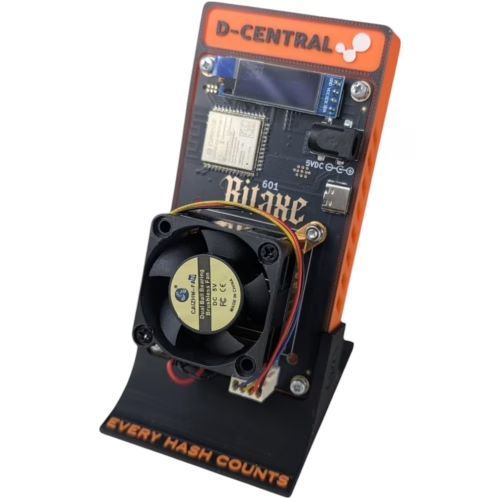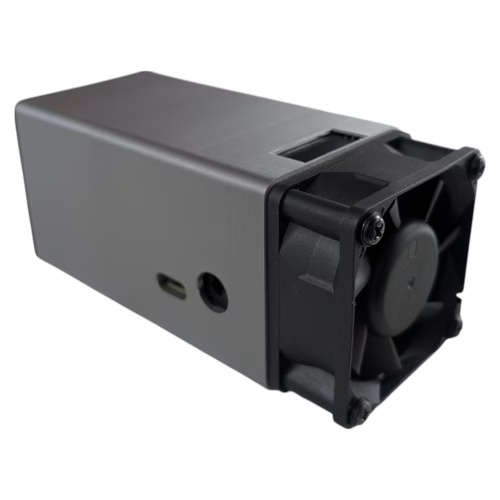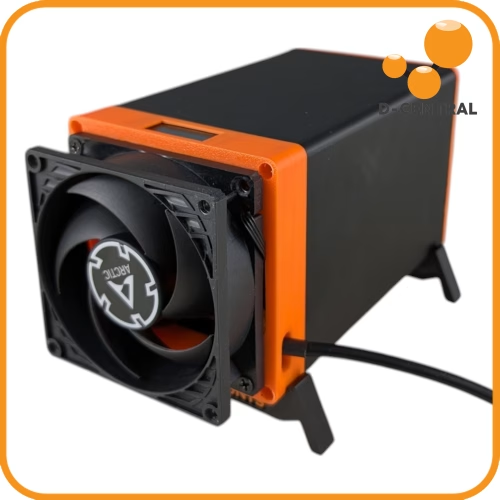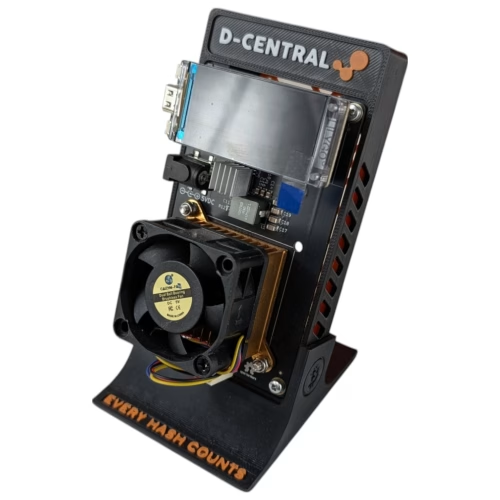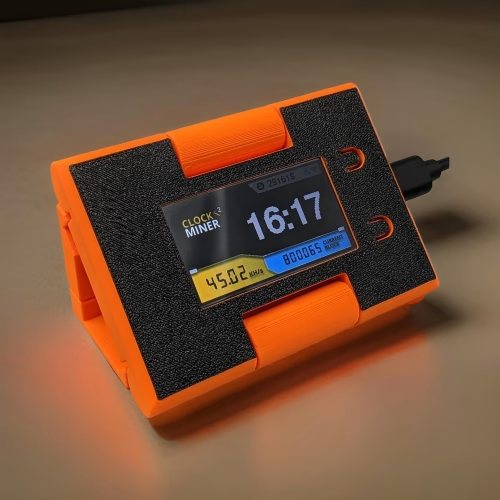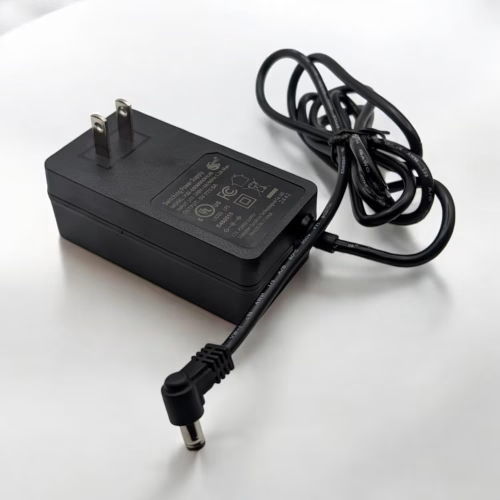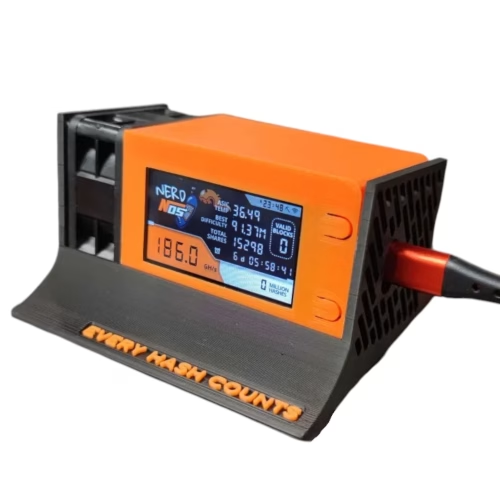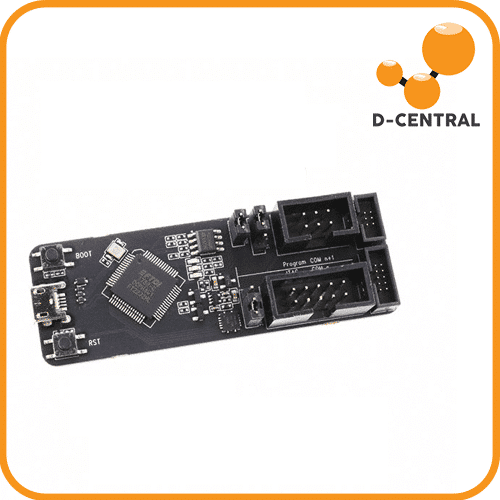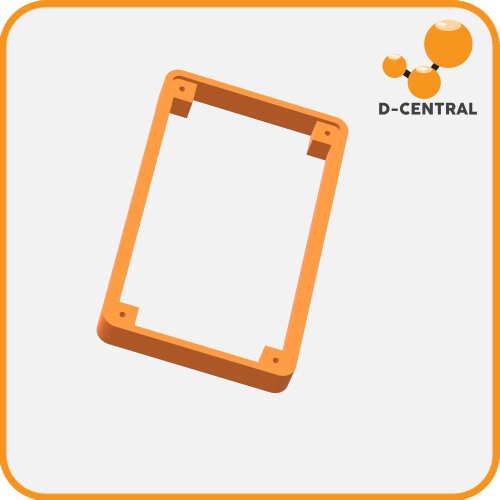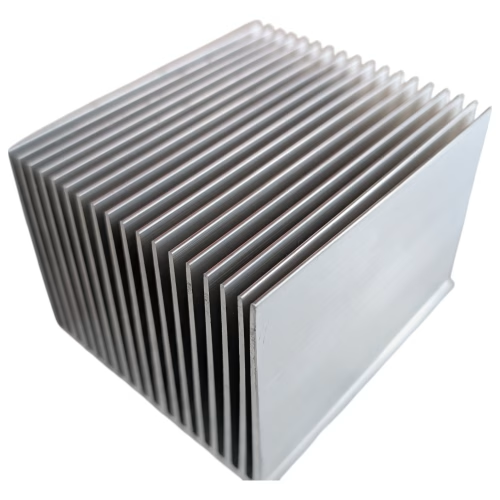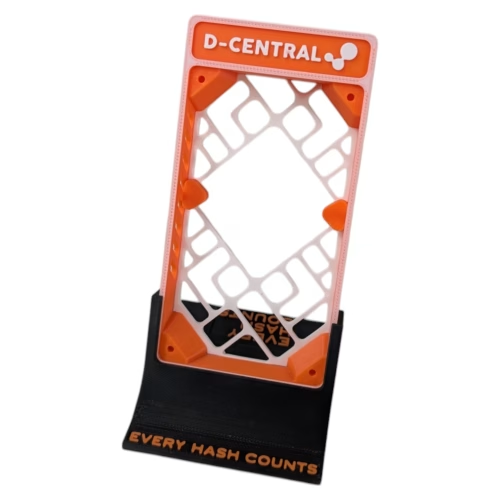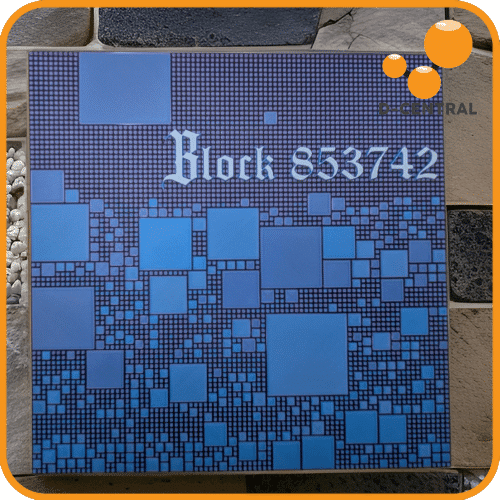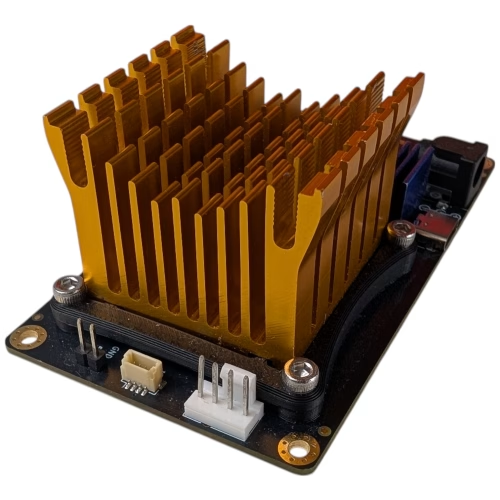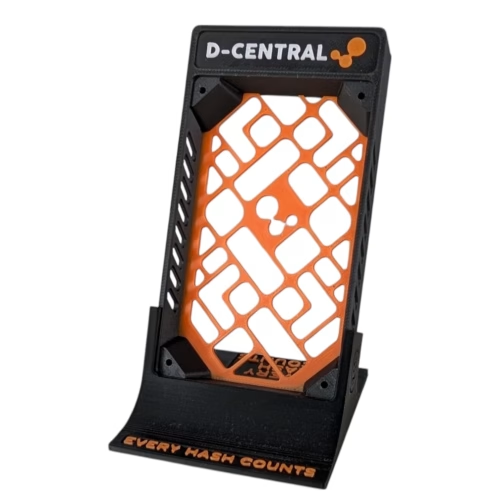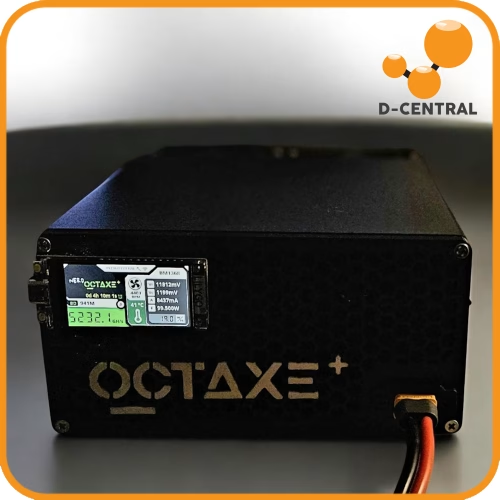Bitaxe - Open Source Bitcoin ASIC Miners
Explore the range of Bitaxe open-source Bitcoin ASIC miners at D-Central. High efficiency, customizable, and perfect for your mining needs.
Bitaxe Bitcoin Miners
Our full range of Bitaxe Products
Welcome to D-Central, your ultimate destination for all things Bitaxe! Here at D-Central, we proudly offer the most comprehensive collection of Bitaxe products, crafted with precision and innovation right here in Canada. Our range includes the latest Bitaxe Supra, Ultra, Max, and more, each designed to meet the diverse needs of Bitcoin miners, from novices to seasoned experts. Discover the unmatched efficiency and customization possibilities with our Bitaxe miners. Whether you’re looking for high hash rates, energy efficiency, or robust performance, our Bitaxe series delivers on all fronts. Each product is backed by our commitment to quality and affordability, ensuring you get the best prices worldwide. Enhance your mining setup with our beautifully crafted, in-house made Bitaxe Standing Cases, and explore the largest customization library available. With D-Central, you have the flexibility to tailor your Bitaxe to your exact specifications, making your mining experience both efficient and unique. Join the community of innovative miners of last resort with D-Central’s Bitaxe collection. Start exploring now and take advantage of our exceptional products and unbeatable prices!
-
Bitaxe
The Bitaxe
189.99$ – 269.99$Price range: 189.99$ through 269.99$ Select options This product has multiple variants. The options may be chosen on the product pageRated 4.20 out of 5 -
Bitaxe
The Bitaxe Hex
499.99$ – 599.99$Price range: 499.99$ through 599.99$ Select options This product has multiple variants. The options may be chosen on the product pageRated 5.00 out of 5 -
Bitaxe
Bitaxe Ice Cooler Tower 52pi Socket
6.99$ Select options This product has multiple variants. The options may be chosen on the product pageRated 0 out of 5 -
Pleb Mining
The Nerdaxe
189.99$ – 269.99$Price range: 189.99$ through 269.99$ Select options This product has multiple variants. The options may be chosen on the product pageRated 0 out of 5 -
Bitaxe
Bitaxe Mesh Standing Case
15.00$ Select options This product has multiple variants. The options may be chosen on the product pageRated 0 out of 5 -
Bitaxe
Bitaxe Power Supply – 2.1mm 5V 6A
15.00$ Select options This product has multiple variants. The options may be chosen on the product pageRated 0 out of 5 -
Bitaxe
BitSupra Case for Bitaxe
30.00$ Select options This product has multiple variants. The options may be chosen on the product pageRated 0 out of 5 -
Bitaxe
BitSupra 1368 Powered by Bitaxe Supra
245.00$ Select options This product has multiple variants. The options may be chosen on the product pageRated 0 out of 5 -
3D Filament Painting
Bitaxe Block 853742 3D Painting
15.00$ – 20.00$Price range: 15.00$ through 20.00$ Select options This product has multiple variants. The options may be chosen on the product pageRated 0 out of 5 -
Accessories
Darth Validator Case for Bitaxe
130.00$ Select options This product has multiple variants. The options may be chosen on the product pageRated 0 out of 5
Bitaxe FAQ
Frequently asked questions
What is a Bitaxe?
The Bitaxe is an open-source Bitcoin ASIC miner designed to provide high efficiency and customization. It includes various models such as the Bitaxe Supra, Ultra, Max, and Hex, each catering to different performance needs and mining capabilities. These miners are known for their affordability, ease of setup, and community-driven improvements.
What is an open-source ASIC miner?
An open-source ASIC miner, like the Bitaxe, allows users to access and modify the design and firmware of the miner. This flexibility enables enthusiasts and developers to customize and optimize their mining hardware. Bitaxe miners are designed with open-source principles, providing a community-driven platform for continuous improvement.
How do I set up my Bitaxe miner?
Setting up your Bitaxe miner involves the following steps:
- Unbox and Assemble: If you purchased a DIY kit, follow the assembly instructions provided.
- Power Supply: Ensure you have a compatible power supply (e.g., 5V 4A for some models).
- Connect to WiFi: Use the built-in WiFi module to connect the miner to your network. It’s recommended to use a 2.4 GHz network for better compatibility.
- Configure the Miner: Access the AxeOS web interface to configure your mining pool details, adjust settings, and monitor performance.
- Start Mining: Once configured, the miner will begin hashing and contributing to your chosen mining pool.
For detailed instructions, refer to the Bitaxe Setup Guide.
How do I optimize the performance of my Bitaxe miner?
To optimize your Bitaxe miner’s performance:
- Firmware Updates: Keep your firmware updated to benefit from the latest improvements and bug fixes.
- Cooling Solutions: Ensure proper cooling to prevent thermal throttling. Consider using high-quality fans or additional heat sinks.
- Power Settings: Adjust the voltage and frequency settings in the AxeOS interface to find the best balance between power consumption and hashing speed.
- Regular Monitoring: Use the AxeOS interface to monitor the miner’s performance, temperature, and power usage regularly.
How do I update the firmware on my Bitaxe miner?
To update the firmware on your Bitaxe miner:
- Download Firmware: Visit the official GitHub page and download the latest firmware version.
- Access Web Interface: Connect to the AxeOS web interface using your miner’s IP address.
- Upload Firmware: Navigate to the firmware update section and upload the new firmware file.
- Reboot Miner: Restart the miner to apply the update.
Always ensure to backup your settings before performing a firmware update.
What is Bitcoin solo mining and how does it work?
Bitcoin solo mining involves mining without joining a mining pool. Solo miners use their hardware to solve blocks independently, and if they find a block, they receive the entire block reward. While the chances of solving a block are lower compared to pool mining, the rewards can be significantly higher.
Can I use my Bitaxe miner for solo mining?
Yes, Bitaxe miners support both solo and pool mining. For solo mining, you need to configure the miner with a solo mining pool’s details in the AxeOS interface. Solo mining can be less predictable than pool mining but offers the potential for larger rewards.
For more information on solo mining, visit D-Central’s solo pool.
How do I set up my Bitaxe for solo mining?
To set up your Bitaxe for solo mining:
- Configure the Miner: Access the AxeOS web interface and enter the details of a solo mining pool, such as the pool URL, port, and your Bitcoin wallet address.
- Optimize Settings: Adjust the voltage and frequency settings for optimal performance.
- Start Mining: Once configured, the miner will begin solo mining, and any blocks found will be credited to your wallet.
What are the odds of finding a Bitcoin block through solo mining?
The odds of finding a Bitcoin block through solo mining depend on the total network hash rate and your miner’s hash rate. Tools like Solochance.com can help estimate your chances based on your specific setup.
How does Bitcoin solo mining resemble a lottery?
Bitcoin solo mining is often compared to a lottery because each attempt to solve a block is a probabilistic event. The likelihood of finding a block is low, but the rewards are high, similar to winning a lottery.
Can I mine Bitcoin at home with a Bitaxe miner?
Yes, Bitaxe miners are designed for home mining setups. They are compact, energy-efficient, and can be configured to run on a standard home network. Proper cooling and ventilation are important to ensure the miner operates efficiently at home.
Why is my Bitaxe miner not hashing?
Several factors can cause a Bitaxe miner to stop hashing:
- Overheating: Ensure your miner is adequately cooled. Upgrade the cooling system if necessary.
- Firmware Issues: Check for the latest firmware updates and apply them. Sometimes re-flashing the firmware can resolve the issue.
- Network Problems: Ensure the miner is connected to a stable 2.4 GHz network. Some routers may need specific settings adjustments to allow mining traffic.
- Power Supply: Verify that your power supply is providing sufficient voltage and current.
If the problem persists, consult the troubleshooting guide.
What should I do if my Bitaxe miner keeps resetting?
Frequent resets can be caused by several issues:
- Firmware Bugs: Ensure you have the latest firmware. If problems started after an update, consider rolling back to a previous version.
- Power Supply: Ensure your power supply is stable and provides consistent voltage.
- Network Stability: Check your network connection. A stable 2.4 GHz WiFi network is recommended.
- Heat Management: Overheating can cause resets. Ensure your miner is well-cooled and operating within safe temperature ranges.
Refer to the community forums and GitHub issues for additional troubleshooting tips.
How do I troubleshoot connectivity issues with my Bitaxe miner?
To troubleshoot connectivity issues:
- 2.4 GHz Network: Ensure your miner is connected to a 2.4 GHz WiFi network, as Bitaxe miners are often incompatible with 5 GHz networks.
- Router Settings: Check your router settings for any security features that might block mining traffic, such as “malicious site protection.”
- Firmware: Ensure your firmware is up-to-date.
- Network Stability: Place the miner close to the router or use a WiFi extender to improve signal strength.
For more detailed steps, visit the support forum.


